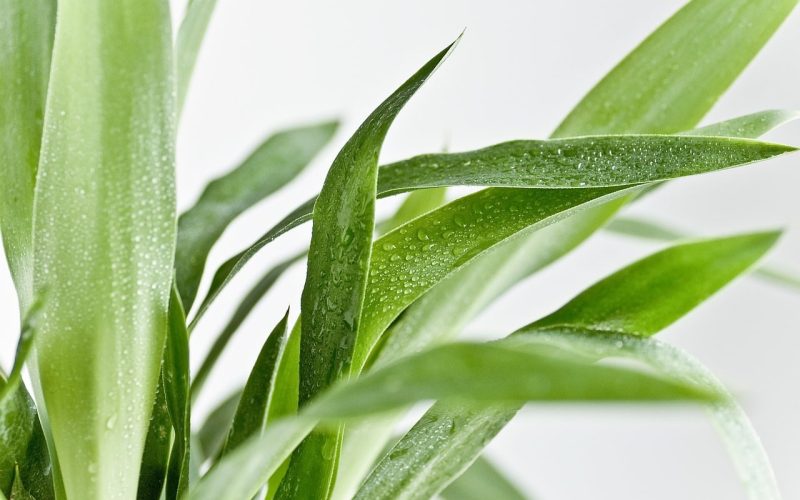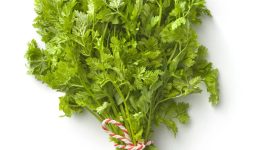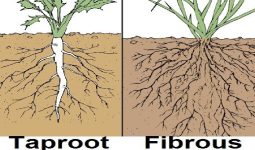Yucca plant is a popular houseplant, but do you know why? Besides their unique, palm-like appearance, there are many reasons to choose yucca as your next houseplant!
Yucca plants provide several benefits when grown indoors. They can make your home feel like the outdoors with minimal effort.
The following list of different types of yucca plants should help you know the various types.
This will help you select and understand why they’re so popular among plant owners everywhere!
Different Types of Yucca Plants
1. Yucca Filamentosa (Adam’s Needle)
This is one of the different yucca plants characterized by its long, sword-like leaves. It grows slowly but can reach up to six feet tall. It does best in full sun and needs little water to survive.
The leaves are sharp, so it’s not the best plant for homes with small children or pets. But if you’re looking for a low-maintenance plant that will add some desert flair to your home, yucca filamentosa is a great option.
2. Yucca Gigantea (Spineless Yucca)
The Spineless yucca is a large plant native to Mexico. It can grow up to 20 feet tall and has long, stiff leaves with sharp tips. The plant gets its name because it has no spines on its leaves.
Additionally, the Spineless yucca is among the different types of yucca plants because it is very easy to care for.
It doesn’t need much water and can tolerate low light levels. The only thing you need to be careful of is not to overwater it, as this can cause the leaves to rot.
2. Yucca x Schottii (Mountain Yucca)
Mountain yucca is a type of tree yucca that grows in the desert regions of the southwestern United States. The leaves are long and thin, and the flowers are white.
Yucca x schottii is a popular indoor plant because it is easy to care for and can tolerate low light conditions. Mountain yucca is a good option if you are looking for a yucca plant that will thrive indoors.
3. Yucca Flaccida (Weak-leaf Yucca Plant)
If you’re looking for different types of yucca plants that are easy to care for. A weak-leaf yucca plant is a great option. This type of yucca plant is native to desert regions, so it’s used in hot, dry conditions.
The weak-leaf yucca plant can reach up to four feet tall when grown indoors. It has long, slender leaves that are green in color with white stripes running down the center.
The weak-leaf yucca plant is a low-maintenance plant that doesn’t require much watering. It’s also tolerant of low light conditions. This makes it a good choice for rooms that don’t get a lot of natural light.
4. Yucca Rupicola (Twisted Yucca)
The yucca plant is a spiky, desert-dwelling succulent that can add a touch of the exotic to your home. Yucca rupicola, or twisted yucca, is a particularly striking variety with its slender, contorted leaves.
Though it’s native to Mexico, this hardy plant can thrive indoors in a pot with well-drained soil. Just give it plenty of bright light and water it sparingly.
The yucca rupicola is a great choice if you’re looking for different types of Yucca plants with low maintenance that makes a big impact.
5. Yucca Wipplei (Our lord’s Candle)
The leaves of this yucca plant are long and thin, growing up to two feet in length. The flowers are white and waxy, growing in clusters at the top of the plant. Yucca wipplei is native to Mexico and can tolerate high and low light conditions.
This plant is also drought tolerant, making it a great choice for those who want a desert-themed home. This yucca is native to California and Baja California. Here, it thrives on coastal dunes, beaches, and areas with saline soils.
It prefers sandy soil but will grow in other types as well. Mature plants can grow up to 8 ft tall. Flowers are bell-shaped and yellow or greenish yellow with an orange stripe inside.
6. Hesperaloe Parviflora (Red Yucca Plant)
Looking for a way to add some desert flair to your home décor? Why not try adding a yucca plant or two? Yuccas are easy to care for and can thrive indoors with just a little sunlight. Plus, they’re sure to make a statement in any room.
Unlike true yuccas, Hesperaloe parviflora (Red yucca plant) produces a tall stalk of pink flowers. This drought-tolerant plant is native to southern Texas.
It’s a good choice for folks who live in arid climates and want something that doesn’t need a lot of water.
It can also be grown outdoors in warm, frost-free areas or greenhouses. Be sure to choose a bright spot and place your plant where it will get sunlight for six hours per day at least.
During the hot summer months, you may need to reduce watering. The soil should be kept slightly moist but not soggy wet. Keeping.
7. Yucca Thompsoniana (Thompson’s Yucca)
If you’re looking for different types of yucca plants that will thrive indoors, look no further than Yucca thompsoniana, or Thompson’s yucca.
This species is native to desert regions of Mexico and Texas. It is perfectly adapted to life in hot, dry conditions.
Also, it’s an evergreen perennial with long, thin leaves that terminate in sharp points. The foliage is a beautiful blue-green color that adds a touch of the exotic to any indoor space.
Thompson’s yucca is a slow-growing plant, reaching heights of 6-8 feet. It can be propagated from offsets or stem cuttings. They make excellent houseplants for beginning gardeners.
8. Yucca Faxoniana (Giant White Yucca)
This yucca is one of the most popular indoor plants. It can grow up to 15 feet tall. It has long, thin leaves that are green or blue-green. The giant white yucca is a slow grower, so be patient when waiting for it to reach its full size.
While it does require some upkeep, this plant is relatively easy to care for. It prefers bright light but can tolerate some shade. Water when the soil is dry and fertilized monthly during the growing season.
Yucca faxoniana is native to the Chihuahuan Desert in Northern Mexico and Texas, United States, Coahuila, Nuevo León, and Tamaulipas in northeastern Mexico.
It is named after Arthur Washington Faxon (1840–1913), who collected the type specimen near Alamogordo, New Mexico, in 1884.
9. Yucca Gloriosa (Spanish Dagger)
Looking for a way to add some desert flair to your home décor? Yucca plants are the perfect way to do it! Not only are they beautiful, but they’re also easy to care for.
Here’s everything you need to know about Yucca gloriosa, the Spanish dagger. They’re native to Southern and Western North America, Central America, and the Caribbean.
Though they prefer full sun, you can grow this yucca plant indoors or outdoors. However, if grown in containers, place them near a window with lots of sunlight.
This is to make sure they can get enough light throughout the day. Ensure not to overwater yucca plants; water them sparingly once every ten days and keep the soil moist.
10. Yucca Rostrata (Beaked Yucca)
Looking for a unique houseplant that will make a statement? Look no further than this yucca plant! These spiky succulents are not only eye-catching, but they’re also easy to care for.
Here’s everything you need to know about growing yucca rostrata indoors:
- Make sure your pot has plenty of drainage holes at the bottom and use cactus soil mixed with sand or perlite in it
- Place it in an area with lots of light and keep it dry during winter
- Water it sparingly during spring and summer (but don’t forget to water it once every week)
- Fertilize three times per year by applying diluted liquid fertilizer.
11. Yucca Glauca (Soapweed Yucca Plant)
The yucca plant is a popular choice for homeowners looking to add a desert feel to their homes. The yucca glauca, or soapweed yucca plant, is a type of yucca plant that is particularly well suited for indoor growth.
Soapweed yucca plants are low-maintenance and can thrive in a variety of conditions. This makes them a great choice for those who want to enjoy the look of the desert without all the work.
12. Yucca Pallida (Pale-leaf Yucca)
If you’re looking for different types of yucca plants that won’t take over your home, the Pale-leaf yucca is a good choice. It grows slowly and only reaches about three feet tall.
The leaves are thin and pale green, with a pointy tip. This yucca does best in bright light but can tolerate some direct sun. Water when the soil is dry to the touch.
13. Yucca Elata (Soaptree Yucca)
Looking for a plant that will make your home feel like a desert? Then consider the yucca elata, or soaptree yucca. This tough plant can withstand neglect and poor watering.
This makes it a great choice for those who don’t have a green thumb. Its unique appearance will certainly add some interest to your indoor space.
14. Yucca Schidigera (Mojave Yucca)
This plant, also known as the Mojave yucca, is a flowering plant native to the Mojave Desert. Its scientific name is Yucca schidigera, and it is part of the Asparagaceae family.
This plant can grow from two to six feet tall and has long, sharp leaves. The flowers of this plant are white or cream-colored and bloom in the springtime.
If you want to add a bit of desert flair to your home, this is one of the different types of Yucca plants for you!
15. Yucca Baccata (Banana Yucca)
One of the most popular types of yucca plants is the banana yucca (Yucca baccata). This Southwestern native is perfect for those who want to add a touch of the desert to their home. The banana yucca gets its name from its thick, banana-shaped leaves.
The leaves are more than just decorative; they’re tough and fibrous. This makes them ideal for use in baskets and other crafts.
And, if you’re looking for a plant that can care for itself, the banana yucca is perfect. It’s incredibly drought-tolerant and can even survive freezing temperatures.
16. Yucca Brevifolia (Joshua Tree)
One of the most iconic plants of the American desert is the Joshua tree or Yucca brevifolia. These weird and wonderful plants can grow up to 40 feet tall, with a trunk diameter of up to two feet.
Joshua trees are slow growers, taking 10 to 100 years to reach their full size. But if you have the patience, these drought-tolerant plants make a beautiful and unique addition to your home.
17. Yucca Aloifolia (Aloe Yucca)
The yucca aloifolia, also known as the Aloe yucca, is a flowering plant native to the southeastern United States. You can grow this yucca plant indoors.
This desert plant is drought-tolerant and can thrive indoors with little maintenance. The yucca aloifolia has long, strap-like green leaves with white stripes. The flowers are white and grow in clusters on the ends of the leaves.
Tips For Growing Yuccas Indoors
To grow these different types of yucca plants indoors, here are tips for you:
- Start with a young plant. Yuccas can be propagated from seed, but starting with a small plant from a nursery is easier.
- Give your yucca plenty of light. These plants do best in bright, direct sunlight. If you can’t provide that, consider using grow lights.
- Let your yucca dry out between waterings. These plants are native to arid regions and don’t like having wet feet. Allow the soil to dry out completely before watering again.
- Don’t worry about feeding your yucca too much. These plants are tough and can withstand a little neglect regarding fertilizer. Just give them a light feeding once or twice a year.
- Keep pests away by removing dead leaves from the bottom of the plant regularly. The leaves will naturally die as they age, and some pests love these places for shelter.
These five tips should help you keep your yucca happy and healthy indoors!
How to Grow a Yucca Plant from Cuttings?
If you’re looking for a plant that will add some serious desert vibes to your home, look no further than these different types of yucca plants.
This hardy plant can thrive indoors with just a little bit of care. Plus, it’s easy to propagate from cuttings, so you can have as many plants as you want!
Here’s how to do it
- Cut off the top of a stem below where leaves emerge and remove any side branches if necessary. Make sure there are at least two nodes (a place where one or more new stems come out). The nodes should be approximately 6-12 inches apart on the cutting to give roots enough room to grow.
- Soak the end in water and then pot it in an appropriate mix. Place it in a bright window and keep it moist but not wet by misting once or twice daily and watering every 7-10 days, depending on what type of soil you use. You may need frequent watering if using a cactus mix or other well-draining soil.
- Over time, the stem will start to sprout roots and produce new leaves. When this happens, move the rooted cutting into its pot filled with fresh soil and continue regular watering until established.
Caring for the White Feather Yucca Plant
Looking for a unique plant to add to your indoor collection? Consider the yucca! This desert plant is not only beautiful, but it’s also easy to care for. Plus, yucca plants can help purify the air in your home.
Although yucca plants can be found in various colors, they are usually green. Be sure to check how much sunlight your yucca needs before you buy it.
The ideal spot for your plant will get between four and six hours of direct sunlight each day. If you want your plant to bloom, place it in an area that gets more light than usual (up to eight hours per day).
How to Trim a Yucca Plant?
So, if you’re looking for a low-maintenance plant that will make a big impact, consider adding these different types of yucca plants to your collection. They are easy to prune.
Here is how to prune a yucca plant:
- Hold the stem firmly at ground level with one hand
- Use sharp shears to cut off the ends of the stem
- Dip pruning shears in insecticide before cutting.
- Immediately rub the exposed end of the stem with sandpaper
- Finally, allow it to heal from the cut by spraying it with liquid fertilizer.
Conclusion
If you’re looking for a dramatic, architectural plant to add to your indoor jungle, look no further than the yucca. Native to the deserts of North and South America, these spiky plants are adapted to surviving in hot, dry conditions.
While they may seem difficult to care for, yuccas are pretty easygoing. You can plant these different types of yucca plants indoors.
They prefer bright light and well-drained soil and can even tolerate periods of drought. If you’re worried about your yucca getting too big for your indoor space, don’t worry. They can be easily pruned to keep them under control.
Frequently Asked Questions
What is the Best Way to Get Rid of Mealybugs on a Yucca Plant Indoors?
Mealybugs are one of the most common pests that can infest houseplants. They are small, white, wingless insects that feed on plant sap. Mealybugs can weaken and even kill a plant if they are not controlled.
The best way to get rid of mealybugs is to combine cultural and chemical control methods. Clean your plants regularly with water to remove old pollen or other debris.
Keep plants away from moist areas such as bathrooms or kitchens, where mealybugs are more likely to proliferate. You should also avoid using insecticides, as they harm beneficial bugs that eat mealybugs, such as ladybugs and lacewings.
What’s the Best Soil Mix for Yucca Plants?
When finding the best soil mix for your yucca plant, ensure it is well-draining. Yuccas are native to desert regions and don’t like to sit in wet or soggy soil.
A good rule of thumb is to mix two parts of potting soil with one part of sand. This will help ensure that your yucca’s roots don’t rot.
What to Do Before Planting a Yucca Plant?
Before planting a yucca plant indoors, ensure a sunny spot. Yuccas need at least six hours of sunlight a day to thrive. They also prefer well-drained soil, so if your yard tends to be on the wet side.
You may want to consider planting your yucca in a pot instead. Choose a pot at least 18 inches wide with drainage holes in the bottom. Once you’ve found the perfect spot and pot for your yucca, it’s time to get planting!








